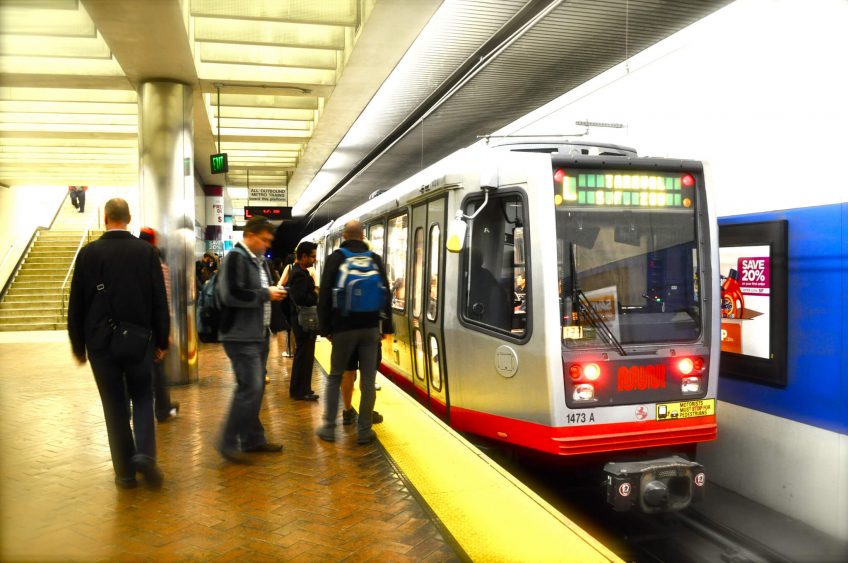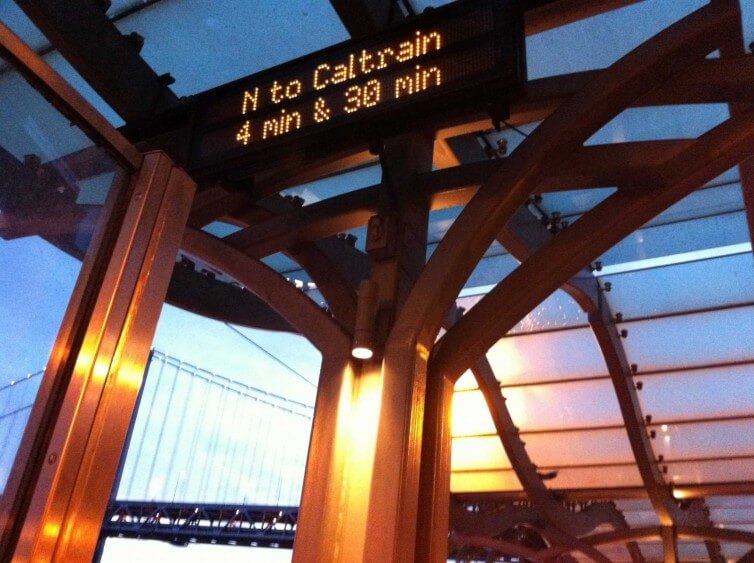San Francisco Muni’s NextBus system will undergo some major changes by the end of 2021. Transit officials Tuesday approved a contract to replace the outdated technology and system used to predict arrival times for buses and trains.
The San Francisco Municipal Transportation Agency’s Board of Directors approved a six-year $89 million contract with two five-year options with Cubic Transportation Systems, Inc. to provide real-time bus and train arrival time.
NextBus was first piloted in The City in 1999 and launched in 2001 and “revolutionized” the way passengers take public transit. Since then, the system and technology has fallen behind, said Jason Lee, the SFMTA program manager for the project.
Lee said:
“Though times and technology have moved forward, NextBus has not fundamentally changed and the system is reaching its end of useful life.”
Tweet this!
The age of NextBus became apparent when an outage in 2017 left passengers without any information at transit stops for next arriving buses and trains because the technology was still using a 2G wireless cellular network.
A slew of new features will be implemented over the next couple of years, including real-time transit arrival information, a display of alternate routes when there are delays and even a map display reflecting where the bus is currently located.

Lee said:
“In our research, we found this instilled confidence that Muni would actually arrive.”
Tweet this!
A staff report said the new software will help to address “ghost buses” where, for example, NextBus says a bus is arriving in five minutes but never arrives and the prediction moves on to the next bus arrival time.
Additionally, the informational display will show if a bus is crowded, which will allow passengers to decide whether to wait for the next arriving bus. Passenger capacity data will come from automatic passenger counters on board most Muni buses.
Lee said this information is particularly important as transit agencies nationwide are facing one of the biggest challenges in recent years: Covid-19.
Signs at transit shelters will be five times larger and will be able to display messages from the agency in multiple languages.
Up to one-third of the transit shelters will have information displayed inside and outside, Lee said.
Dependent on if funding resources become available, the contract will allow for up to 800 solar-powered real-time transit arrival signs at new transit locations and in underserved communities.
Some Muni transit shelters are currently unable to connect to NextBus due to lack of electrical power connection. Additionally, some transit stops known as “flag stops” are simply identified with yellow and black paint on telephone or light poles.
Approximately 750 transit shelters are currently connected to the NextBus, out of approximately 3,500 transit stops, Lee said.
The agency is also looking to provide more information inside buses, including time passengers have to make a transit connections to other Muni bus routes.

Transit officials are hoping the new features will persuade Muni existing passengers to continue using the transit system and persuade new passengers to give it a try.
A 2017 survey conducted by the SFMTA asked riders if they would still choose Muni if a transit stop display sign showed a bus arriving in 20 minutes but offered an alternative and faster Muni route nearby.
More than 80 percent responded said they would still choose to take Muni across all income levels.
Cat Carter, interim director of San Francisco Transit Riders, said providing customers with transit information is essential for transit service.
Carter said:
“Having that information allows people to have control over their lives and transit options — information that makes it possible for people to choose Muni over private cars.”
Tweet this!
Jerold serves as a reporter and San Francisco Bureau Chief for SFBay covering transportation and occasionally City Hall and the Mayor's Office in San Francisco. His work on transportation has been recognized by the San Francisco Press Club. Born and raised in San Francisco, he graduated from San Francisco State University with a degree in journalism. Jerold previously wrote for the San Francisco Public Press, a nonprofit, noncommercial news organization. When not reporting, you can find Jerold taking Muni to check out new places to eat in the city.
